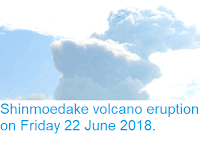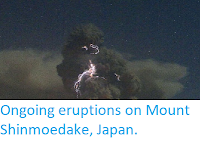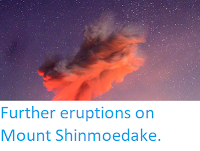The Sakurajima volcano on Kyūshū Island, Japan, erupted dramatically slightly after 7.45 am local time on Monday 16 September 2019, producing a column of ash that reached slightly over 2800 m above sealevel. The Japan Meteorological Agency had been warning such an eruption was likely on the volcano after inflation was discovered close to the Minamidake Crater on the volcano's southern peak. The volcano underwent three smaller eruption on Tuesday 17 September, then another major eruption on Friday 20 September, producing an ash column that reached 2600 m above sealevel.
Sakurajima is one of Japan's most active volcano's with over 80 eruptions so far this year (the exact figure is hard to derive as eruptions often occur close together and may run into one another), though there have been no major events since September. This high level of activity is impressive, but prevents Sakurajima from becoming a major hazard, partly because people tend not to build homes or other structures too close to very active volcanoes, but also because the high levels of activity tend to prevent pressure within the volcano from building up to dangerous levels, which can lead to sudden very large and destructive eruptions on less obviously active volcanoes.
The location of the Sakurajima volcano. Google Maps.
Japan has a complex tectonic situation, with parts of the country on four different tectonic plates. Kyūshū Island lies at the northeast end of the Ryukyu Island Arc, which sits on top of the boundary between the Eurasian and Philippine Plates. The Philippine Plate is being subducted beneath the Eurasian Plate, in the Ryukyo Trench, to the Southeast of the Islands. As it is drawn into the interior of the Earth, the tectonic plate is partially melted by the heat of the Earth's interior, and liquid magma rises up through the overlying Eurasian Plate to form the volcanoes of the Ryukyu Islands and Kyūshū.
The movement of the Pacific and Philippine Plates beneath eastern Honshu. Laurent Jolivet/Institut des Sciences de la Terre d'Orléans/Sciences de la Terre et de l'Environnement.
See also...
Follow Sciency Thoughts on Facebook.









